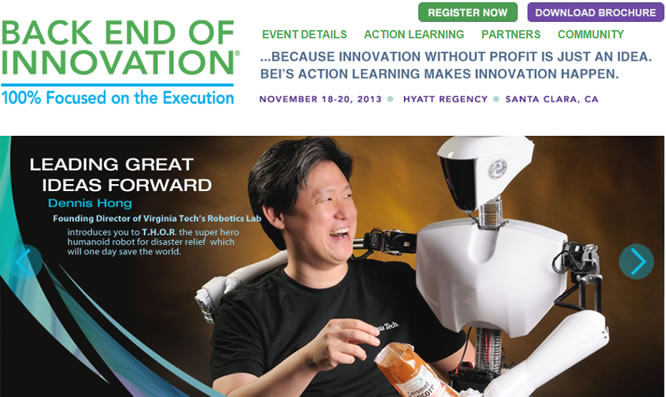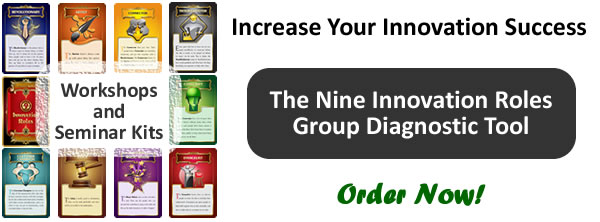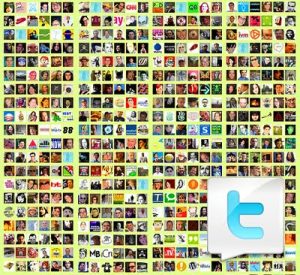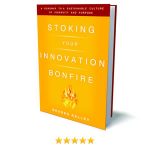
I had the opportunity to speak at the Back End of Innovation (BEI) Conference recently in Silicon Valley. There was a good roster of thought leader and innovation practitioner speakers and before my speech I attended several of the other sessions and captured some quotes and insights on Twitter. If you don’t follow me on twitter where I tweet as @innovate then you will have missed my thoughts on what some of the key innovation quotes and observations were from the three days of the event, so I’ll recollect them here the best that I can.
DAY ONE
Here is a recap of the first day of the Back End of Innovation (BEI) Conference in Silicon Valley.
The event began with Julie Anixter of Innovation Excellence and Ronald Jonash of IXL and a discussion of a new Global Innovation Certification and the need for innovation training and certification. A BETA of the innovation certification was announced and I will be providing eLearning for the Global Innovation Certification BETA beginning November 24, 2013.
We then heard about the importance of branding your technical innovations and rationalizing your portfolio from Dee Slattery of Ansell and then of cocreation with Thomas Finkle of Passenger.
Mick Simonelli (formerly of USAA) then walked us through an innovation practicum during which there were several key nuggets, including:
- A show of hands indicated that most people in the room at #bei13 are building innovation capability, while only a few are at event level of maturity or the system level
- “It’s sexy at the front end of innovation, but it’s the sweat & toil in middle & back end that makes it happen.”
- “Innovation does not grow in a vacuum. You have to get your innovation approach into how people think about the way we do things around here.”
- We had a very positive impact by moving legal input from the front end of innovation to the back end.
- “We had five different innovation processes at USAA and different integration points for each one for best impact.”
- “The HR people should be your best friends when it comes to infusing innovation into your performance management system.”
Then there was a great comment from a gentleman from Boeing that captured the insight about innovation success coming from idea quality not idea quantity – “Ideas of Merit.”
Ken Favaro of Booz & Co. focused on talking about why innovation doesn’t work and had a few interesting tidbits, including:
- “To think outside the box, you must look into other boxes.” – Prof William Duggan of Columbia
- For innovation success, involve people required for back end implementation in the front end – early buy-in & engagement
Mike Hess of Medtronic talked about how they balance between customer-led and economic-led innovation with tech-led innovation, and some of the logical traps organizations fall into, such as stealing resources from longer-term, higher-risk innovation projects to staff shorter-term, lower-risk ones.
Finally, the day closed with Dennis Hong of Virginia Tech (and soon UCLA) talking about the evolution of humanoid robots, and Vivek Wadhwa talking about women in innovation. Vivek Wadhwa talked about his women innovator’s book project and the controversy he stirred up by pointing out that Twitter has an all male management team and all male board. Meanwhile, Dennis Hong focused on his philosophy for why robots in the home should have humanoid form and that is because robots in the home need to adapt to human-centered designs. So instead of asking why do we need humanoid robots, we should ask what robotic tasks require a humanoid form? This is leading them to focus on robots for firefighting and other hazardous situations, to help save human lives.
If you were at the conference, what did you take away from Day One?
DAY TWO
The second day began with Vijay Govindarajan. Here are some Vijay’s key quotes and insights:
- “Strategy = Innovation”
- “If you want to lead in the future, you must do innovation”
- “Strategy is not about competition for the present, it’s about competition for the future”
- “Common sense is not necessarily common practice.”
- “We say there is no innovation in education but none of the Top 10 universities in the world are in Top 10 today.”
- Vijay talked about his box 1,2,3 thinking model. Personally, I think the error is tasking one person with success in all three boxes.
- “Companies over-emphasize idea generation and under-emphasize idea execution when it comes to innovation.”
- My reaction – People hype business model innovation WAY too much. Most Business Model Innovation examples started with the innovation, not other way around.
- My reaction – The business model canvas is a useful tool for innovation, but it is not by itself the source of it.
- My reaction – Ugh. I am so tired of hearing about fail fast, success comes not from failing fast, it is about LEARNING fast.
- “You can ask your performance engine to do MORE work, but not DIFFERENT work.”
- “For Box 3 experiments you must create a dedicated team with permission to create its own culture”
- “CEO must recognize that there will be tensions between performance engine & Box 3 experiments that they must manage”
I then attended a panel with Rachel Birney of Exxon Mobil, Jon Fredrickson of Innocentive, and Julie DiSandro and Kurt Scherer of Booz Allen Hamilton. Here are the most interesting things I came away with from this session:
- “Innovation = change with impact” Simple. Powerful. Elegantly stated. – K Scherer
- “Don’t communicate something about your innovation program until you have a real story to tell.” – J DiSandro
- “When it comes to managing an innovation community, you must stimulate people with a variety of things to react to.” – J Fredrickson
- “Recognize and fight the two antibodies that will kill innovation: corporate antibodies and personal antibodies” – Unknown
The third session I attended of the day, was with Maria B Thompson of Motorola Solutions and here are some of the key insights and quotes from that session:
- People tend to come back from ride alongs not with problems, but solutions.
- When people come back from ride alongs with solutions, you end up with incremental innovation instead of breakthroughs you seek
- To get to innovation you need to get people to park in the problem space and refrain from jumping to solutions
- When you are observing customers, look for the BUTs and the unexpected workarounds
- Look for the important contradictions that customers seem to want “I want long battery life but low weight”
- “Park in the problem space and force yourself to stay there and reframe it in multiple ways.” Yes!
- “Engineers love questions”
- Problemstorming or Provocation Sessions should have at least 8+ people, but she prefers 20+ people to get more dots to connect
- Interesting that Maria B Thompson mentioned that she switched from going to FEI to BEI. I wonder if that might be a trend?
- “The measure of intelligence is the ability to change” – Albert Einstein
- Interesting idea that for innovation, instead of brainstorming ideas, you should focus on assumptionstorming and problemstorming”
- Directed Innovation model being discussed is a good example of peer-to-peer collaboration – Motorola Solutions & Medtronic
- Maria gave a shoutout to Conceptual Blockbusting
- You might be on to something if your engineers tell you you’re asking them to violate the laws of physics.
- Rule #1 to ideation sessions, don’t give the lawyer the pen for the whiteboard!
- Contribution from audience – for remote people trying to participate in assumption, problem, or idea storming – partner them up
- Demise of Motorola Mobility? The success of the RAZR – People reassigned from smartphone work to RAZR work because of its success.
- “Vision without execution is hallucination.” – Thomas Edison
The fourth session I attended of the day was with Michele R Westlander, Chief Technology Officer (Public Sector) and Innovation Evangelist from Google. The presentation was heavily skewed towards evangelism, but here were some of the interesting bits from my tweet stream:
- Google doesn’t call it HR, they call it People Ops. “It’s all about the people, and the corporate culture.”
- Google Corporate Philosophy – “If you give people freedom, they will amaze you.”
- People ask us about expense of Google cafeterias, but think about expense of lost time & collaboration of people going off-campus.
- Google’s offices have a Tech Stop for hands on computer issue repair. Time is money.
- My question – Some people would say that Google is great at invention (Microsoft too), but not so good at innovation. What do you think?
- My reaction – Google’s new collaboration model they are touting isn’t new though, this was whole Lotus Notes model available twenty years ago. Just saying.
- “At Google, failure is expected, if you’re not failing you’re pushing hard enough or reaching far enough.”
- Love that – “Don’t take ‘No’ from someone who can’t give you a ‘Yes’ in the first place.”
- My reaction – Happy to see Google is the first one to talk about learning fast being more important than failing fast – my mantra
- Three biggest barriers to innovation – culture (people) aka resistance to change, policy (business processes), and technology
The fifth session I attended of the day was with Steve Garguilo and Matt Kane of Johnson & Johnson. They spoke about their efforts to bring the TEDX model into the Salon events that they were helping to organize within J&J:
- They wanted the Salon events to be very local and how they spread to Brazil and China and other J&J places
- Their Salon format was based on TEDX format and had a goal for 75% internal and 25% external speakers
- They told a story about how an employee created art out of styrofoam waste & how that evolved into an effort to reimagine waste at J&J
- They talked about how powerful it can be to change people’s experience – used accordion & post-its under people’s chairs to make point
- They focus not just on compelling content on main stage, but chances to connect & explore, and to experience something new
- My reaction – I like what they are doing with their Salon experiences, ties in nicely with the first of the Eight I’s of Infinite Innovation
- My reaction – It’s becoming more common to have a Chief Innovation Officer, but do you have a Chief Inspiration Officer? Inspiration drives innovation…
- They told a powerful story about how someone installed a “Before I die, I want to…” picture on the wall and how people engaged with it, and how it evolved into a “Before the end of 2013…” campaign within the company
- They talked about how the TED library is being translated into other languages and how this can be leveraged for global event rollout
- They started their events informally because they were passionate about it, and it has grown into a corporate funded event series.
- We are not only ones doing TEDX kinds of events, Google, Disney, Intuit and others are doing too & can be learned from
- They used a nomination process, required rehearsals, and had people who could help shape presentations & evaluate whether people were ready
- Part of how we convinced people to conform to the TEDX style was to reinforce how they were going to help people look good
- My reaction – Interesting to see how the TEDX format has spread from expanding to additional cities, and now expanding into inspiring employees
- My reaction – Must say that by making employee inspiration investment in right way, you will not only increase innovation but employee engagement too
- It is worthwhile work to contribute towards getting people to bring their authentic selves to work…
- Their efforts were off the side of the desk of their full time jobs until it grew to a keep doing or stop doing moment…
The final session I attended was with Ken Perlman of Kotter International. Here are some of the key insights and quotes from that session:
- “Too often we deprive people of something to take home to show that they matter.”
- “We don’t have the time to work on the stuff that is truly important because we’re working on the things we have to do.”
- “Leaders should lead with a question. Leaders should be asking WHO and WHY to drive innovation.” – Are you?
- “Most people are good at self managing. Most people are focused on the WHEN, WHERE, and HOW. Leverage this!”
- “Leaders ask people to take ownership.” – If nobody responds, then it is on you & your framing.
- Our hierarchical approach to management is really all about risk management – Not built for speed.
- “Employers are competing for employees’ time.”
- “Simple is not equal to easy. Clarity creates speed.”
- “It is human nature that when pushed, we push back.”
- “Hierarchy needs the network to innovate.”
- “Organizations become more hierarchical as they grow and networked organization shrinks.”
- “We argue about the what when we should be focused on agreeing on the why.”
If you were at the conference, what did you take away from Day Two?
Coming up next, highlights from Day 3 of BEI…
P.S. Don’t forget to register for the FREE Beta of the Global Innovation Certification and the FREE Innovation eLearning BETA for the Global Innovation Certification BETA for Innovation Catalysts.
DAY THREE
The third day began with Lisa Marchese of The Cosmopolitan Hotel of Las Vegas. Here are some Lisa’s key quotes and insights:
- When we created the Cosmopolitan brand we did so with the knowledge that most visitors came from LA, SF, NYC, etc.
- “When we launched The Cosmopolitan in Las Vegas, room occupancy and room rates were low. This created a can’t lose environment.”
- “We’ve out Belagio’d the Belagio. We’ve got the best view of the fountains.”
- “We looked at ‘What happens in Vegas, stays in Vegas’ and we had a different insight – people want to take constraints of their normal life off”
- “We arrived at the Curious Class ™ as a target – help curious, creative people leave with a story to tell.”
- “We saw Vegas mystique slightly differently. People want to be constraint-free self and have memorable experience.”
- “It is very difficult to keep a passionate, innovative culture where people feel that we are doing something different”
- RT @virtualdavid – Innovators lose mojo over the years. It is hard to keep burning passion that we are doing something different going.
- When innovation is in play, if people avoid conflict, the outcome is affected. It is not always a pleasant experience.
- RT @RominaAK – Innovative Marketing – It’s emotive. It makes you want to learn more
- “Look for friction, and push innovation focus all the way through to marketing. Even marketing people go back to what they know.”
- We created something new with the Cosmopolitan, and then we had several other people competing in us in white space we created.
- Lisa described how their team keeps creating innovation only to have other people knock us off, again and again, it’s exhausting
- We innovate in creative and channel – We buy where they don’t buy – As soon as someone comes where we are, we leave
- We don’t want to be seen as at parity with the competition
- We know we are in a saturated market & we have less money to spend, so we try to own channels we use – figuratively or actually
- Because we must maintain agility in our marketing and advertising & not appear in cluttered channels, we are running out of channels
- Because we are running out of channels, now we have to start thinking about owning the channels
- Flipping things on their head is how we stay fresh as a marketing-led organization
- People who in the innovation industry are “openers” are not necessarily “operators” and a lot of the creators are leaving
- It is a big challenge to keep things fresh, and we have had some cultural and service challenges, things haven’t been perfect
- RT @virtualdavid – Mutation is progress. Correct is a mistake. Just right amount of wrong. From Cosmopolitan Hotel ad via Lisa Marchese
- RT @thehealthmaven – Agility! When your competition zigs YOU zag.
- When you get one win under your belt is helps you get future boundary pushing work approved.
- We create a lot of content for our property and this all has to be curated in order to ensure the success of brand and hotel
- “Trying to be like someone is not innovative, even if it’s Apple.”
- If you want to create a great brand, you can’t live in the middle, you must firmly plant your feet on one side or the other.
- It is okay to piss people off or not have them like you. A strong brand can’t be for everyone.
- How do you keep people motivated in innovation? Have them look at more stuff. – Love it – Agrees with inspiration as center!
I then attended a session with Kenneth Klimpel of Colgate Palmolive. Here are the most interesting things I came away with from this session:
- With the exception of pet nutrition, all our products are driven by four core technology innovation spaces
- We can make exactly the same thing as anyone else for less because all of our plants are optimized for purpose
- Amazing! A Colgate-Palmolive toothpaste plant can make 700 tubes of toothpaste – wait for it – PER MINUTE! That’s a lot of toothpaste
- When we looked at electric toothbrushes we didn’t have the competencies to succeed there, but we wanted to do it, now what?
- KK just showed an ad for the Colgate 1500 electric toothbrush via a partnership with Omrom – Looks like a smart toothbrush. Cool!
- Colgate 1500 was outcome of Colgate looking at a mature market where they wanted to enter, but didn’t have competencies.
The third session I attended of the day, was with David Davidovic of PathForward (formerly Genentech) and Sara M. Roberts of Roberts Golden Consulting and here are some of the key insights and quotes from that session:
- RT @Smartorginc – David Davidovic says you can’t understand a company’s innovative-ness by only looking at its products and services.
- Volatility is the new normal – Must focus on the Volume, Velocity and Variety in your innovation efforts
- RT @Smartorginc – Sara Roberts says we hire for diversity but incentivize conformity
- Sara Roberts told story behind Blockbuster demise through the lens of a change in CEOs and switch from online to retail focus
- My reaction – I would argue that Blockbuster was not innovative because their board was not innovative & ultimately they run show. With public companies, if a board lacks innovation vision, they can kill an otherwise innovative company. Be careful who you pick for your board!
- Sara Roberts says we’ve been asking for ideas when we need to be asking for involvement – we must empower the crowd
- Most nimble & innovative companies ask employees not just for ideas but also to drive business planning process with predictions
The fourth session I attended of the day was with Bill Demas of Turn. Here were some of the interesting bits from my tweet stream:
- Bill Demas talked about their pivot from an ad network to a completely different business model
- Talked about their employee recognition award of burning a plastic boat in their honor instead of an employee of the month
- Bill Demas talking about their pivot from an ad network to a self-service platform and how they had to let people go and hire new ones
- Bill Demas talked about how they really try to build in transparency into what they do in what was a very obfuscated market
- Bill Demas talking about how the advertising market has become so much more fragmented across a plethora of channels and devices
- @BillDemas talked about how their turn software creates a Bloomberg-like system for tracking advertising spend
- He talked about how their new vision was moving forward and then suddenly Google bought their biggest competitor
- “I kept reinforcing that smaller companies move slower than big companies, and so our advantage was speed.”
- They started hiring software folks and teaching them digital advertising – We’re a SaaS company first
- @BillDemas talked about their use of traditional forming, storming, norming, performing framework as they went through tech pivot
- They have a one pager that they use to track their future strategy and the things that are important to management
- Sorry, had to leave a bit earlier to set up for my speech…
The final session of the event was my talk on Building Effective Innovation Teams. I spoke about several different tools, techniques and understanding that are important when it comes to building better innovation teams. Some of this content can be found in FREE innovation eLearning available from Innovation Tutors, including in the two following BETA eLearning modules:
If you were at the conference, what did you take away from Day Three?
P.S. Don’t forget to register for the FREE Beta of the Global Innovation Certification and the FREE Innovation eLearning BETA for the Global Innovation Certification BETA for Innovation Catalysts.

 Sign up here to get Human-Centered Change & Innovation Weekly delivered to your inbox every week.
Sign up here to get Human-Centered Change & Innovation Weekly delivered to your inbox every week.

![]() Sign up here to get Human-Centered Change & Innovation Weekly delivered to your inbox every week.
Sign up here to get Human-Centered Change & Innovation Weekly delivered to your inbox every week.


 Picking up where my hugely popular article ‘
Picking up where my hugely popular article ‘

 It used to be that when you formed a rock band to seek fame and fortune, all you had to do was find a lead singer, a guitarist, a bass player, a drummer, and maybe another guitarist or a keyboard player if you wanted a richer sound. But the digital age presents a level of complexity and opportunity that John, Paul, and Ringo never had to deal with.
It used to be that when you formed a rock band to seek fame and fortune, all you had to do was find a lead singer, a guitarist, a bass player, a drummer, and maybe another guitarist or a keyboard player if you wanted a richer sound. But the digital age presents a level of complexity and opportunity that John, Paul, and Ringo never had to deal with. Despite the fact that Twitter has been around since 2006 and Facebook has been around since 2004, social media is still the bright shiny object in the room (it’s still the current marketing fad). People still think they are being innovative if they use it, and unfortunately many people still approach it as something separate and scary instead of treating it as just one tool in the toolbox of anyone working in marketing or innovation. Yes, I linked social media to innovation in the last sentence and that’s because in the same way that social media is a tool that all marketers must learn how to use as part of an integrated marketing campaign, innovation managers must also learn how to use social media properly as part of their innovation efforts.
Despite the fact that Twitter has been around since 2006 and Facebook has been around since 2004, social media is still the bright shiny object in the room (it’s still the current marketing fad). People still think they are being innovative if they use it, and unfortunately many people still approach it as something separate and scary instead of treating it as just one tool in the toolbox of anyone working in marketing or innovation. Yes, I linked social media to innovation in the last sentence and that’s because in the same way that social media is a tool that all marketers must learn how to use as part of an integrated marketing campaign, innovation managers must also learn how to use social media properly as part of their innovation efforts. On Thursday, November 18, 2010 at Noon EST I will be participating in a twitter chat at #innochat (6PM in Europe, 9AM on the west coast). One great way to follow along is to use this URL:
On Thursday, November 18, 2010 at Noon EST I will be participating in a twitter chat at #innochat (6PM in Europe, 9AM on the west coast). One great way to follow along is to use this URL:
 I came across the following video of a BMW advertising installation thanks to a tweet from Blogging Innovation contributor
I came across the following video of a BMW advertising installation thanks to a tweet from Blogging Innovation contributor